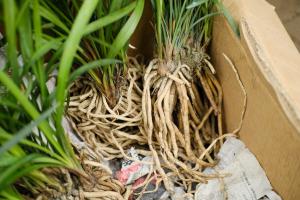Introduction
Aloe vera is a hardy plant that can survive in various conditions. One of the common mistakes people make when caring for their aloe plant is overwatering. Overwatering can lead to several problems, making it essential to understand what happens when you overwater an aloe plant.
Root Rot
The most common problem associated with overwatering aloe plants is root rot. Aloe vera plants have shallow roots that are easily affected by excess water. Overwatering leads to saturated soil, which causes the roots to rot. The rotting roots cannot absorb water and nutrients, leading to stunted growth and eventual death of the plant. The first sign of root rot is yellowing leaves and a soft stem.
Mushroom Growth
Overwatering your aloe plant can also lead to the growth of mushrooms. Mushrooms thrive in humid and damp conditions. An aloe plant that is overwatered creates the ideal environment for mushrooms to grow. The mushrooms can steal nutrients from the aloe plant, eventually leading to its death. If you notice mushrooms growing around your aloe plant, it's time to reduce the amount of water you give it.
Leaf Discoloration
Overwatering can also cause discoloration of the aloe plant's leaves. When there is too much water in the soil, the roots cannot absorb it all. The excess water causes the plant's leaves to turn yellow, brown, or mushy. Discoloration is usually a sign of waterlogged soil which can cause a lack of oxygen for plant roots. It is essential to reduce the amount of water you give your aloe plant to prevent leaf discoloration.
Pest Infestations
When you overwater your aloe plant, the soil becomes moist and attracts pests like fungus gnats and spider mites. The pests can cause significant damage to your aloe plant, leading to its death. Fungus gnats lay their eggs in the soil, leading to an infestation of maggots that feed on the aloe plants' roots. Similarly, spider mites feed on the plant's leaves, causing them to turn yellow and fall off. Overwatering can create the ideal environment for pests to thrive, leading to significant damage to your plant.
Conclusion
Overwatering your aloe plant can lead to several problems, including root rot, mushroom growth, leaf discoloration, and pest infestations. It is essential to water your aloe plant sparingly and only when the soil is dry to the touch. Make sure that the pot has proper drainage to prevent waterlogging. By taking care of your aloe plant correctly, you can enjoy its beauty and health benefits for many years to come.

 how many times do yo...
how many times do yo... how many planted tre...
how many planted tre... how many pine trees ...
how many pine trees ... how many pecan trees...
how many pecan trees... how many plants comp...
how many plants comp... how many plants can ...
how many plants can ... how many plants and ...
how many plants and ... how many pepper plan...
how many pepper plan...






























